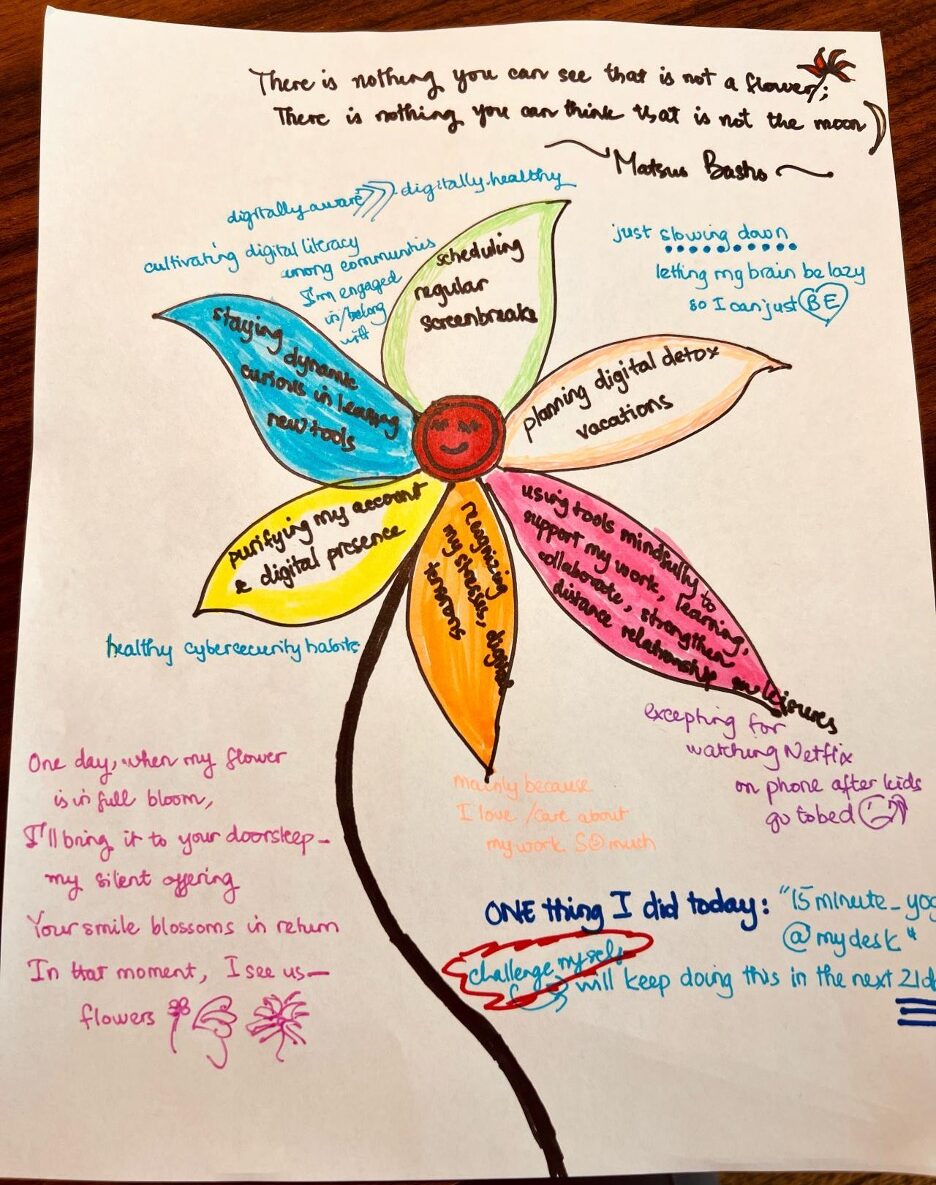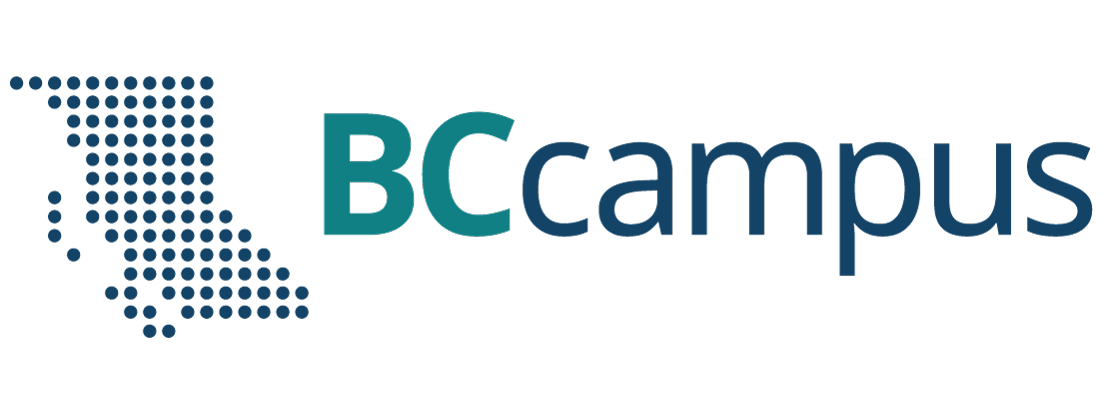Module 10: Supporting Digital Wellbeing in the Age of GenAI
Whatever field we are in, whatever subjects we are teaching, we are likely immersed in technology (including GenAI) for most of our social, professional, or personal needs. Thus, understanding and maintaining digital well-being is crucial for educators in order to navigate this digital age effectively. This module supports educators in exploring the PERMA (positive emotion, engagement, relationships, meaning, accomplishment) framework, a comprehensive positive psychology model, in order to thrive in teaching and learning in the age of GenAI. It addresses the psychological and emotional challenges of using GenAI and promotes positive and meaningful engagement with those platforms.
Objectives
- Understand the five components of the PERMA framework in the context of digital well-being.
- Critically analyze personal digital experiences through reflective practices.
- Develop strategies to manage digital stress and promote positive emotional health.
- Create learning and working environments that support meaningful digital engagement and holistic digital wellness.
First key questions:
- How do GenAI technologies simultaneously enhance and challenge our well-being?
- Are you able to use technologies (including GenAI) to support your personal health, safety, and relationships?
- We discussed some GenAI uglies including overreliance, data privacy and protection, and environmental issues. What have you done to manage pitfalls, especially when they impact your health?
- What strategies do you use to maintain authenticity in digital interactions, especially with GenAI?
Staying Digitally Healthy with the PERMA Framework
(Adapted from Digital Pedagogy Toolbox: Cultivating Digital Well-Being as a Social Practice with the PERMA Framework)
The PERMA Framework (Seligman, 2012) provides five building blocks for well-being: positive emotion, engagement, relationships, meaning, and accomplishment. Below, we examine each facet through reflective questions and interactive activities.
Positive emotion
Positive emotion is a feeling of joy, hope, and contentment (Seligman, 2012). Positive emotion refers to what makes you feel good. It doesn’t mean you engage only in the positive, smiley aspects of teaching and learning with GenAI. You also need to acknowledge the negatives of engagement with GenAI platforms, reduce stressors, and promote positive coping mechanisms and resilience when working with these tools.
Reflective questions
When you think about your relationship with GenAI technologies, is it positive or negative? Are you experiencing any stress or anxiety? If so, what can you do to reduce negative emotions?
Activity 1: Positive emotion mapping with GenAI (co-created with ChatGPT 4o)
Objective: Explore emotional responses and manage stress related to GenAI integration
Steps:
- Emotional landscape mapping
- Create a personal emotion chart documenting your initial feelings about GenAI in education.
- Identify your emotions: excitement and curiosity; anxiety or uncertainty; fears about technology replacement; hopes for educational innovation, etc.
- Stress mitigation strategy development
- Develop a personal GenAI emotional wellness plan. What support systems can you create for yourself when interacting with GenAI in your daily teaching/learning practice?
- Create specific coping strategies for moments of technological overwhelm: addressing imposter syndrome; maintaining human connection in AI-assisted learning; and setting practical expectations and boundaries.
Engagement
Engagement is feeling attached and involved, and the ability to concentrate on activities (Seligman, 2012). Think of the engagement facet as “flow” (Csikszentmihayi, 2002), which occurs when you use your strengths to face challenges presented in an activity. The engagement facet leads you toward creating meaningful opportunities for yourself and your students to link with strengths and interests so they can become one with activities they do online.
Reflective questions
By engaging when using GenAI technologies, are you getting in the flow?
Do GenAI platforms give you the chance to collaborate with others, share stories, relax, or find quality time to live in the present moment?
Activity 2: Create a strength-aligned GenAI integration matrix (co-created with ChatGPT 4o)
Objective: Identify personal strengths and create meaningful GenAI-enhanced learning experiences
Steps:
- On a piece of paper, list your strengths and interests.
- Map your strengths against potential GenAI applications.
- Incorporate GenAI as a collaborative tool in your preparation, design, and delivery process but maintain human agency and creativity.
Relationships
Relationships mean feeling connected, supported, and cared about (Seligman, 2012). As humans are inherently social, it is very important to promote opportunities for collaboration and interaction within and among teams.
Reflective questions
Are you able to use GenAI to make new connections or strengthen relationships?
Are you able to avoid negative relationships and interactions via these technologies?
Activity 3: Relationship building in the age of GenAI
Objective: Maintain meaningful human connections while integrating AI technologies.
Steps:
- Analyze current classroom interaction patterns (spaces for group work, pair work, student-student interaction, student-teacher interaction, etc.)
- Interact with a familiar chatbot and review their advice/suggestions for building or enhancing human relationships when working/learning with GenAI.
- Create a bank of strategies to develop emotional intelligence and maintain human peer rapport (connecting with the community of practice, seeking opportunities for mentorship, etc.)
Meaning
Meaning refers to feeling valued and connected to something greater than the self (Seligman, 2012). As Seligman discussed, an intrinsic human quality is the search for meaning and the need to have a sense of value and worth. The meaning pathway suggests promoting regular reflection and finding ways to connect learning activities to the values and holistic purposes of the course.
Reflective question
Does your use of GenAI help you achieve greater meaning?
Activity 4: Creating a GenAI philosophical statement or ethical framework for your usage (co-created with ChatGPT 4o)
Objective: Align GenAI usage with broader educational values and purposes.
Steps:
- Reflect on your core values and purposes.
- Map GenAI capabilities against core educational values.
- Develop criteria for meaningful GenAI integration.
- Craft a GenAI usage framework or GenAI philosophical statement that emphasizes:
- Ethical considerations
- Human agency
- Critical thinking
- Holistic learning approaches
Accomplishment
Accomplishment means feeling capable or having a sense of achievement and mastery of work. It is a result of working and progressing toward goals. Through the accomplishment block, think of practices that help you and your students build intrinsic self-motivation in setting goals and having a strong determination to finish what they set out to do.
Reflective questions
Does using GenAI help you aim higher?
Does using GenAI allow time to celebrate little things?
Activity 5: Growth tracking portfolio
Objective: Keep notes of your successes related to GenAI engagement.
Steps:
- Skill development roadmap
- Create a personal GenAI learning journey map.
- Set incremental, achievable GenAI integration goals.
- Design a celebration system for GenAI integration/learning milestones.
- Professional development portfolio
- Develop an ongoing digital portfolio that documents GenAI learning experiences, successful integration strategies and reflective insights.
Summary
This module encouraged educators to approach GenAI integration holistically by applying the PERMA framework to navigate the psychological and emotional challenges of digital engagement. Through reflective practices and actionable strategies, educators can thrive in digital environments while promoting meaningful, positive interactions with technology.
Final Reflection
Growing Your Digital Wellbeing Flower 🌸🌷🌼🪷🌺🌻
- Take a piece of paper and draw a flower with multiple petals. Just focus on the drawing—let your creativity flow.
- Imagine that each petal represents a different aspect of digital wellbeing such as healthy screen time, positive interactions with tools and others, etc.
- Label each petal with the aspect it represents.
- Colour your flower based on how well you think you’re nurturing each aspect. Use vibrant colors for strengths and lighter shades for areas needing improvement.
If you’re inspired to go further:
- Around your flower, draw or write strategies or plans to help each aspect bloom.
- Draw some gardening tools to symbolize features, tools, or resources you use to maintain your digital wellbeing.
- Under your flower image, write one specific action that you will take today, this week, or in the coming weeks to cherish your flower.


